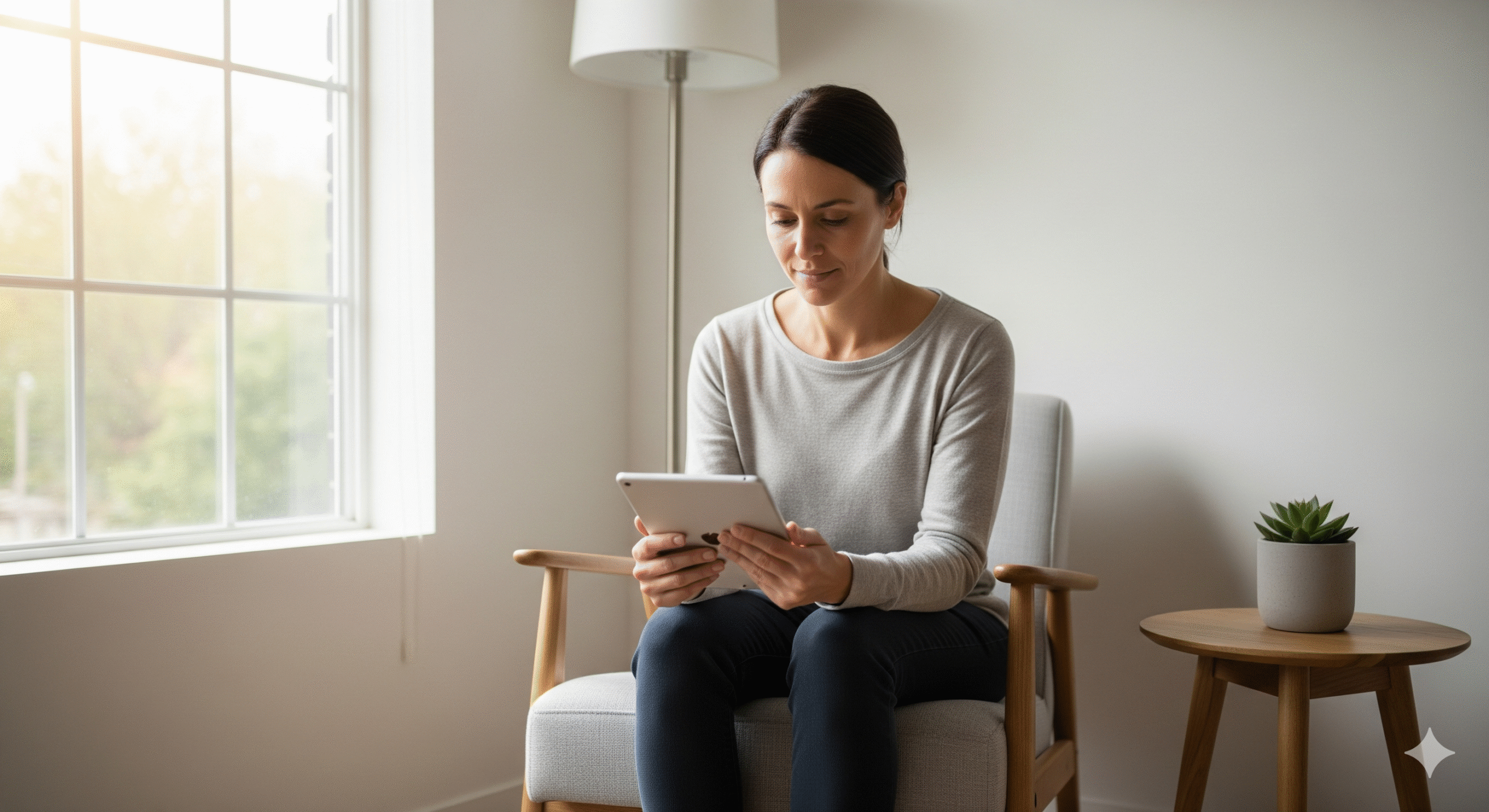Do you ever feel like you’re drowning in a sea of notifications, endless scrolling, and digital distractions? You’re not alone. For a generation that has grown up with a supercomputer in its pocket, the constant connectivity that once felt like a superpower has started to feel more like a relentless burden. We’re more “connected” than ever, yet many of us feel increasingly isolated and anxious.
But what if there was a way to take back control? Not by throwing your phone into the ocean and becoming a modern-day Luddite, but by intentionally and mindfully reshaping your relationship with technology. This is the core idea behind digital minimalism, a lifestyle philosophy that is gaining rapid momentum and could very well be the next major lifestyle revolution.
In this comprehensive guide, we’ll explore what digital minimalism is, why it’s becoming so popular, the profound benefits it offers, and how you can begin your own journey toward a more intentional and fulfilling digital life.
The Digital Deluge: Understanding the Modern Problem
Before we can appreciate the solution, we need to understand the problem. The last two decades have seen an unprecedented explosion of digital tools and platforms. From the rise of social media to the omnipresence of streaming services and instant messaging, our lives are now intertwined with technology in ways that were unimaginable even a short time ago.
For a while, this felt like a net positive. Instant communication, unlimited information, and the ability to connect with anyone, anywhere—what’s not to love? But as technology became more sophisticated, it also became more insidious. Tech companies, fueled by an attention-based economy, began to design their products to be as addictive as possible. Notifications, infinite scroll, and “likes” were engineered to hijack our brain’s reward systems, creating a cycle of compulsive checking and consumption.
The result is a societal condition of “digital overload.” Our attention is fractured, our focus is eroded, and our mental space is cluttered. We spend countless hours mindlessly consuming content that provides little to no value, often at the expense of activities that truly matter, like deep work, meaningful conversations, or simply sitting with our own thoughts. This is the backdrop against which digital minimalism emerged not as a fad, but as a necessary and powerful counter-movement.
What Exactly is Digital Minimalism?
So, what is digital minimalism? At its heart, it’s a philosophy of technology use, not a rejection of it. Coined and popularized by author Cal Newport in his book of the same name, digital minimalism is defined as:
“A philosophy of technology use in which you focus your online time on a small number of carefully selected and optimized activities that strongly support things you value, and then happily miss out on everything else.”
The key words here are “intentionality” and “value.” It’s not about using less technology for the sake of it, but about using the right technology for the right reasons. A digital minimalist doesn’t get rid of their smartphone or laptop; they meticulously prune their digital life, keeping only the tools that serve a specific purpose and align with their deeply held values. The rest—the time-sinks, the distractions, and the low-value applications—are ruthlessly cut out.
This is a fundamental shift from the “more is more” mentality of modern tech culture. Instead of adopting every new app or service that comes along, a digital minimalist approaches each new tool with a skeptical, questioning mindset: Does this truly add value to my life? What are the costs?
Digital Minimalism vs. Digital Detox: A Key Distinction
It’s easy to confuse digital minimalism with a digital detox, but they are very different. Think of it like this:
| Aspect | Digital Detox | Digital Minimalism |
| Goal | A temporary break or reset from technology. | A permanent, long-term lifestyle philosophy. |
| Duration | A fixed period, often 24 hours, a weekend, or 30 days. | An ongoing practice and a way of life. |
| Approach | A drastic, all-or-nothing approach to curb bad habits. | An intentional, mindful re-evaluation of technology use. |
| Outcome | Often, a return to old, bad habits once the break is over. | A lasting change in your relationship with technology. |
| Analogy | Going on a crash diet to lose weight quickly. | Adopting a healthy, balanced eating plan for life. |
Export to Sheets
A digital detox can be a useful starting point—a kind of “cleanse” to shock your system and reveal just how dependent you’ve become. However, without a new philosophy to guide you, the old habits will almost always creep back in. Digital minimalism provides that guiding philosophy, ensuring the changes you make are not just temporary, but sustainable.
The Life-Changing Benefits of a Digital Minimalist Lifestyle
The rewards of adopting digital minimalism go far beyond just spending less time on your phone. The real payoff is in what you gain: more time, more focus, more presence, and a greater sense of well-being.
Improved Mental Health and Well-being
One of the most immediate and profound benefits is the positive impact on mental health. The constant stream of curated, perfect lives on social media can lead to feelings of inadequacy, anxiety, and a relentless fear of missing out (FOMO). By intentionally limiting or eliminating these platforms, you remove a major source of comparison and social pressure. This allows you to focus on your own life and your own progress, rather than the highlight reel of others.
Reclaiming Time and Attention
Time is our most valuable asset. Digital minimalism teaches you to treat your attention with the respect it deserves. By reducing mindless scrolling and low-value activities, you create a vacuum that can be filled with high-quality leisure. Imagine what you could do with an extra 1-2 hours a day: learn a new skill, read books, spend time with loved ones, or simply enjoy a hobby. Digital minimalism isn’t about doing less; it’s about doing more of what truly matters to you.
Enhanced Focus and Productivity
Our brains are not designed to multitask. The constant pings and notifications fragment our attention, making it nearly impossible to engage in “deep work”—the kind of focused, uninterrupted work required to produce high-quality output. By removing digital distractions, you can train your brain to concentrate for extended periods. This leads to higher-quality work, more creative thinking, and a greater sense of accomplishment.
Stronger Real-World Connections
When we are constantly staring at a screen, we are less present in our physical surroundings. A digital minimalist intentionally creates opportunities for face-to-face interaction. This might mean leaving your phone in your pocket during a dinner with friends, going for a walk without music, or simply making eye contact with the people you encounter throughout your day. The result is a richer, more authentic connection with the people and world around you.
Increased Creativity and Boredom
We have become so accustomed to instant gratification that we have lost the art of being bored. As Cal Newport argues, “Boredom is a key ingredient for a meaningful life.” When we’re not constantly stimulated, our minds have space to wander, to connect disparate ideas, and to generate new thoughts. Digital minimalism reintroduces periods of unstructured, screen-free time, which is essential for fostering creativity and self-reflection.
The Challenges and Potential Cons
While the benefits are compelling, adopting a minimalist approach to technology isn’t without its challenges. It’s a journey, not a switch you can flip.
Social Pressure and FOMO
The biggest hurdle for many is social pressure. Our social circles and professional networks are deeply embedded in digital platforms. Opting out can feel like you’re disconnecting from the world. You might miss group chats, event invitations, or inside jokes. The fear of missing out is real, and it takes time and discipline to reframe this feeling as the joy of missing out on low-value content (JOMO).
Professional and Practical Hurdles
For some, certain technologies are non-negotiable for work. A marketing professional, for example, cannot simply delete all social media apps. Digital minimalism isn’t about blanket bans but about intentional use. This means setting strict boundaries, like only using certain platforms during specific work hours, turning off all notifications, and avoiding personal use during the workday. It requires careful planning and communication with colleagues and clients.
The Difficulty of Breaking Addictive Habits
The dopamine loops built into our favorite apps are powerful. Breaking a compulsive habit of checking your phone can be a significant mental struggle. It requires acknowledging the addiction, building new habits to replace the old ones, and having a strong “why” to motivate you through the difficult initial phase.
Who Should Embrace Digital Minimalism?
The beauty of digital minimalism is that it’s a flexible philosophy. It’s not a one-size-fits-all solution but an adaptable framework. This lifestyle can be transformative for a wide range of people:
- The Overwhelmed Professional: Someone who feels their workday is constantly interrupted by Slack, email, and other notifications, and who wants to reclaim their focus for deep, productive work.
- The Anxious Student: A student who finds themselves endlessly scrolling through social media when they should be studying, leading to stress and poor academic performance.
- The Present Parent: A parent who wants to be more present and engaged with their children, rather than constantly distracted by their smartphone.
- Anyone Feeling Burned Out: Someone who feels a general sense of unease, anxiety, or burnout from the sheer volume of digital noise in their life.
- The Aspiring Creative: A writer, artist, or musician who wants to create more space for boredom and unstructured time to fuel their creative process.
Frequently Asked Questions about Digital Minimalism
Is digital minimalism just for tech-addicts?
Not at all. While it can be a powerful tool for those with compulsive tech habits, digital minimalism is for anyone who feels that their relationship with technology is out of balance. It’s about being proactive and intentional, regardless of how much time you currently spend online.
How do I handle work communication as a digital minimalist?
This is a key challenge. The goal is to separate your professional and personal digital lives as much as possible. Set specific times to check email and messaging apps, turn off all notifications outside of those times, and make a concerted effort to communicate your boundaries to colleagues. For many, this means using a desktop for work-related tasks and keeping the phone as a low-distraction device.
Can I be a digital minimalist and still use social media?
Yes, absolutely. Digital minimalism is not about a total ban. If a platform like Instagram or Facebook provides genuine, high-value connection (e.g., staying in touch with a close-knit group of friends or family), then a minimalist can use it. The key is to use it intentionally, perhaps on a schedule (e.g., 15 minutes a day) and only on a desktop to avoid the constant notifications and mindless scrolling of a mobile app.
What’s the best first step to take?
The best first step is to perform a digital declutter. This is a 30-day period during which you take a break from all “optional” technologies. During this time, you get a clear sense of which tools you actually need and which are just distractions. After 30 days, you can reintroduce a select few tools, but only if they align with your core values and have a defined purpose.
How long does it take to see results?
You can start feeling the benefits almost immediately. Within the first week, many people report feeling less anxious and more present. The long-term benefits, like improved focus and a greater sense of purpose, will become more apparent over a period of months as you retrain your brain and build new, healthy habits.
The Final Verdict: Your Life, Reclaimed
In a world that is becoming louder, faster, and more cluttered with each passing day, digital minimalism offers a quiet, powerful alternative. It’s a lifestyle that prioritizes quality over quantity, presence over distraction, and purpose over noise.
It’s not about being a luddite or giving up the conveniences of modern life. It’s about taking back control from the systems that were designed to control you. It’s about asking what you truly value and using technology as a tool to support that value, rather than letting it become the value itself.
For those who are tired of feeling drained by their screens and long for a deeper, more focused life, digital minimalism isn’t just a trend. It’s a path toward a more intentional, meaningful, and genuinely human existence. And that, in an age of digital overload, is the very definition of a revolution.







Leave a Reply